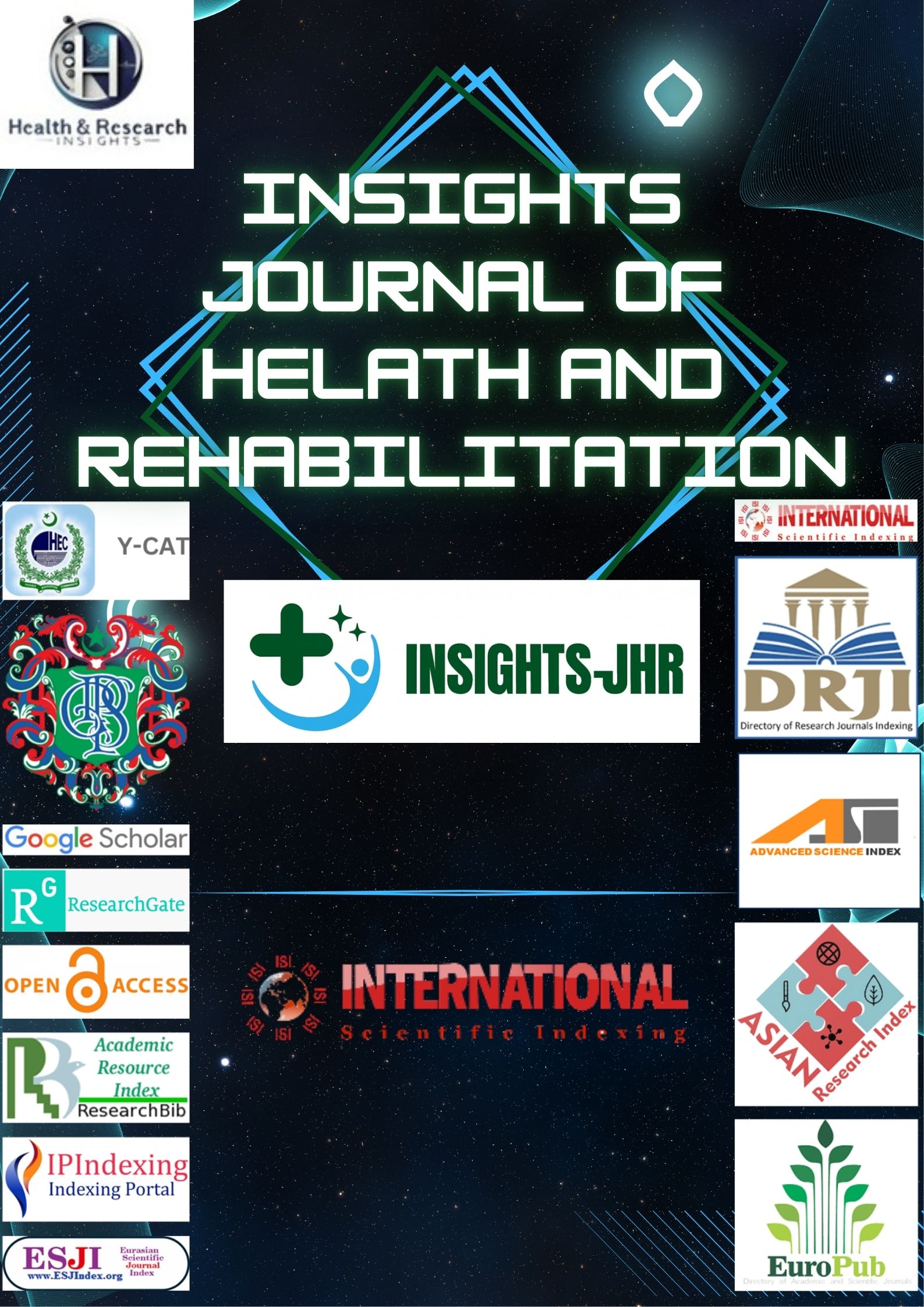EFFECTIVENESS OF VIRTUAL REALITY DISTRACTION THERAPY IN REDUCING PROCEDURAL PAIN AMONG PEDIATRIC PATIENTS
DOI:
https://doi.org/10.71000/z30jtc20Keywords:
Anxiety, Child, Distraction Techniques, Pain Management, Pediatric Nursing, Randomized Controlled Trial, Virtual RealityAbstract
Background: Procedural pain and anxiety are common in pediatric care and can negatively impact cooperation, recovery, and future healthcare interactions. Non-pharmacological strategies, particularly immersive virtual reality (VR), have emerged as promising adjuncts to improve patient comfort during minor but distressing procedures.
Objective: To evaluate the effectiveness of immersive VR distraction therapy in reducing procedural pain intensity, anxiety, and behavioral distress in pediatric patients compared to standard care in outpatient hospital settings.
Methods: A randomized controlled trial was conducted over six months in three private hospitals in Lahore, Faisalabad, and Multan, Pakistan. A total of 140 children aged 6–12 years undergoing venipuncture, intravenous cannulation, or dressing changes were randomized equally to VR distraction or standard care. Pain intensity was assessed immediately post-procedure using the Wong-Baker FACES Pain Rating Scale. Secondary outcomes included procedural anxiety (Child Fear Scale) and observed distress (OSBD-R). Data were analyzed using independent t-tests for continuous variables, with statistical significance set at p<0.05.
Results: The VR group reported significantly lower pain scores (mean 3.05 ± 0.98) compared to the control group (mean 5.06 ± 1.18; p=0.001). Anxiety scores were also reduced in the VR group (3.04 ± 0.99) versus control (4.25 ± 1.16; p=0.001). Observed distress was markedly lower in the VR group (1.86 ± 0.65) than in controls (3.11 ± 0.86; p=0.001). No adverse events were reported, and VR was well tolerated across all sites.
Conclusion: Immersive VR distraction significantly reduced pain, anxiety, and distress in pediatric patients undergoing minor procedures, supporting its use as an effective, feasible, and non-pharmacological adjunct in routine outpatient care.
References
Litwin SP, Nguyen C, Hundert A, Stuart S, Liu D, Maguire B, et al. Virtual reality to reduce procedural pain during IV insertion in the pediatric emergency department: a pilot randomized controlled trial. The Clinical journal of pain. 2021;37(2):94-101.
Czech O, Wrzeciono A, Rutkowska A, Guzik A, Kiper P, Rutkowski S. Virtual reality interventions for needle-related procedural pain, fear and anxiety—a systematic review and meta-analysis. Journal of Clinical Medicine. 2021;10(15):3248.
Chua L, Yi LWW, Foo JJ, Hao CK, Wong KPL, Lin OH, et al. Virtual Reality for Procedural Distraction for Children. Asian Journal of Pediatric Dermatology. 2024;2(3):92-8.
Gerards M, Miller J, Doshi D, Hoyer A, Flöttmann N, Barthlen W. Virtual reality for distraction during painful procedures in pediatric surgery: A randomized clinical trial. Journal of Pediatric Nursing. 2025;82:116-22.
Fabricant PD, Gross PW, Mackie AT, Heath MR, Pascual-Leone N, Denneen JP, et al. Virtual reality distraction is no better than simple distraction techniques for reducing pain and anxiety during pediatric orthopaedic outpatient procedures: a randomized controlled trial. Clinical Orthopaedics and Related Research®. 2024;482(5):854-63.
Addab S, Hamdy R, Thorstad K, Le May S, Tsimicalis A. Use of virtual reality in managing paediatric procedural pain and anxiety: An integrative literature review. Journal of Clinical Nursing. 2022;31(21-22):3032-59.
Hundert AS, Birnie KA, Abla O, Positano K, Cassiani C, Lloyd S, et al. A pilot randomized controlled trial of virtual reality distraction to reduce procedural pain during subcutaneous port access in children and adolescents with cancer. The Clinical journal of pain. 2022;38(3):189-96.
Ferraz-Torres M, San Martín-Rodríguez L, García-Vivar C, Soto-Ruiz N, Escalada-Hernández P. Passive or interactive virtual reality? The effectiveness for pain and anxiety reduction in pediatric patients. Virtual Reality. 2022;26(4):1307-16.
Xiang H, Shen J, Wheeler KK, Patterson J, Lever K, Armstrong M, et al. Efficacy of smartphone active and passive virtual reality distraction vs standard care on burn pain among pediatric patients: a randomized clinical trial. JAMA Network Open. 2021;4(6):e2112082-e.
Wang Y, Guo L, Xiong X. Effects of virtual reality-based distraction of pain, fear, and anxiety during needle-related procedures in children and adolescents. Frontiers in psychology. 2022;13:842847.
Nordgård R, Låg T. The effects of virtual reality on procedural pain and anxiety in pediatrics: a systematic review and meta-analysis. Frontiers in Virtual Reality. 2021;2:699383.
Wong CL, Choi KC. Effects of an immersive virtual reality intervention on pain and anxiety among pediatric patients undergoing venipuncture: a randomized clinical trial. JAMA network open. 2023;6(2):e230001-e.
Gao Y, Xu Y, Liu N, Fan L. Effectiveness of virtual reality intervention on reducing the pain, anxiety and fear of needle‐related procedures in paediatric patients: A systematic review and meta‐analysis. Journal of Advanced Nursing. 2023;79(1):15-30.
Cáceres-Matos R, Castillo-García M, Magni E, Pabón-Carrasco M. Effectiveness of Virtual Reality for Managing Pain, Fear, and Anxiety in Children and Adolescents Undergoing Needle-Related Procedures: Systematic Review with Meta-Analysis. Nursing Reports. 2024;14(3):2456-84.
Amali RJ, Chavan SS. Effectiveness of virtual reality distraction on pain perception and fear among children with cancer undergoing IV cannulation. Indian Journal of Community Medicine. 2023;48(6):909-14.
Yan X, Yan Y, Cao M, Xie W, O'Connor S, Lee JJ, et al. Effectiveness of virtual reality distraction interventions to reduce dental anxiety in paediatric patients: a systematic review and meta-analysis. Journal of dentistry. 2023;132:104455.
Mohanasundari SK, Raghu VA, Joseph J, Mohan R, Sharma S, SK M, et al. Effectiveness of flippits and virtual reality therapy on pain and anxiety among children undergoing painful procedures. Cureus. 2021;13(8).
Lluesma-Vidal M, González RC, Garcia-Garces L, Sanchez-Lopez MI, Peyro L, Ruiz-Zaldibar C. Effect of virtual reality on pediatric pain and fear during procedures involving needles: Systematic review and meta-analysis. JMIR serious games. 2022;10(3):e35008.
Felemban OM, Alshamrani RM, Aljeddawi DH, Bagher SM. Effect of virtual reality distraction on pain and anxiety during infiltration anesthesia in pediatric patients: a randomized clinical trial. BMC Oral Health. 2021;21(1):321.
Hoag JA, Karst J, Bingen K, Palou-Torres A, Yan K. Distracting through procedural pain and distress using virtual reality and guided imagery in pediatric, adolescent, and young adult patients: randomized controlled trial. Journal of Medical Internet Research. 2022;24(4):e30260.
Downloads
Published
Issue
Section
License
Copyright (c) 2025 Iqra Khalil, Jannat Gulzar, Ishrat Mahtam, Muhammad Bilal, Sirajuddin Soomro, Safa Javed (Author)

This work is licensed under a Creative Commons Attribution-NonCommercial-NoDerivatives 4.0 International License.







